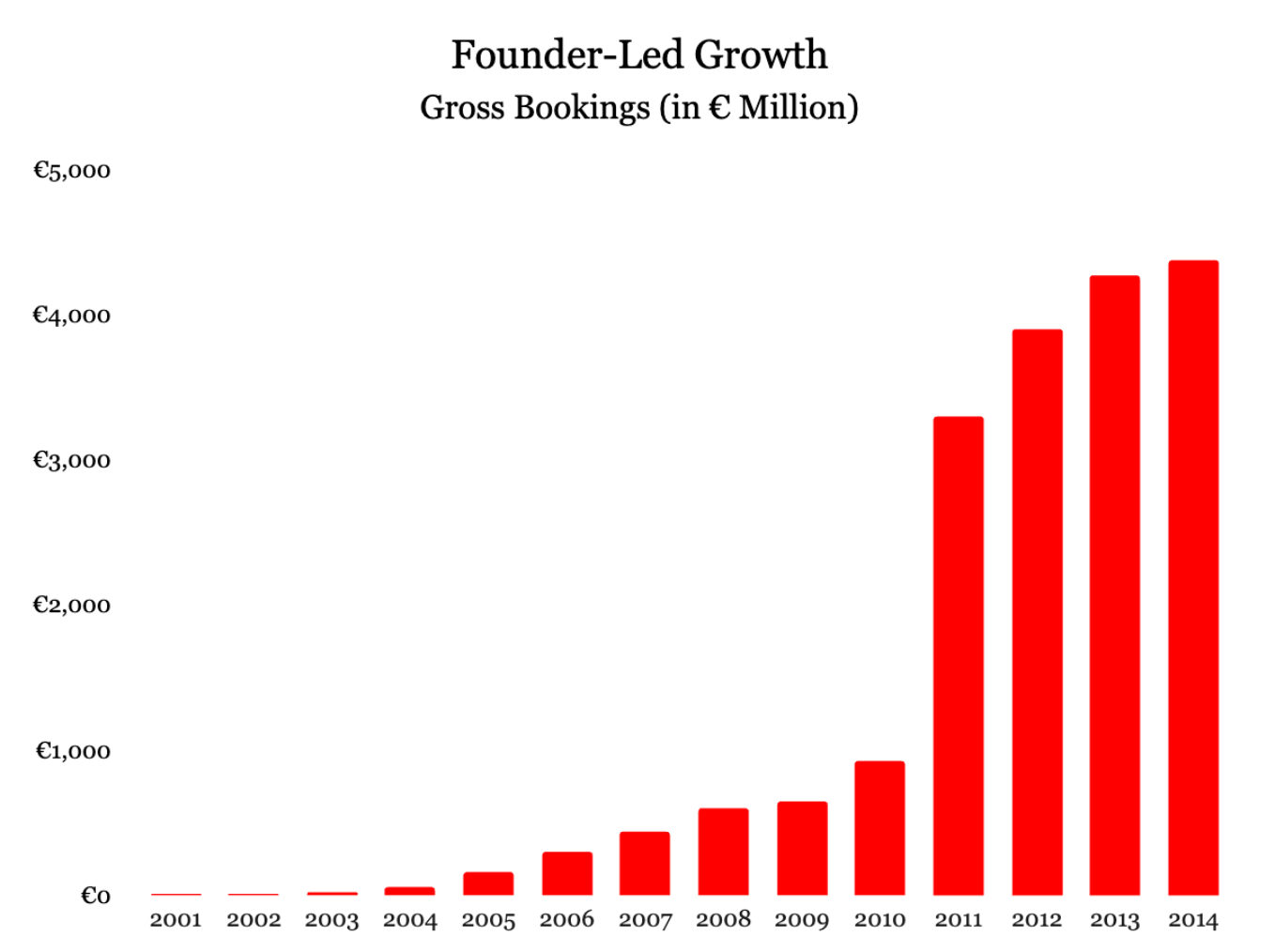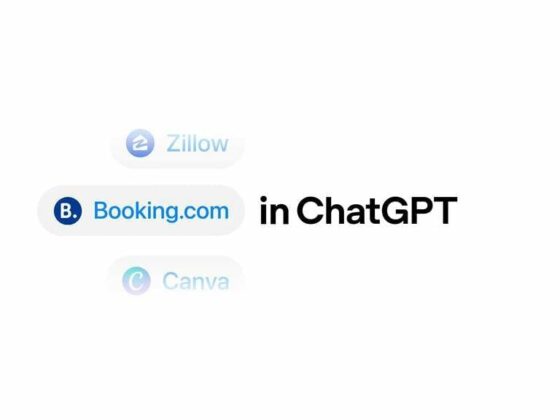Our Journey Building Spain’s First Unicorn
Note: I originally wrote this at the invitation of Ruben Dominguez for his newsletter (The VC Corner). I’m sharing it here with you as well because I believe these lessons from building eDreams could be valuable for some of you.
In 1999, there was no “lean startup.” No “customer discovery.” No “product-market fit” framework.
What we had was a completely wrong idea about what customers wanted, a market that wasn’t ready for pure internet plays, and exactly zero local engineers willing to join our crazy venture.
But we got one thing right from the start: we believed there’s nothing more powerful than having your interests perfectly aligned with your customers’. This belief would shape every major decision we made.
Somehow, that combination led us1 to build eDreams into Spain’s first unicorn, reaching €4.3 billion ($5.9 billion) in bookings, €430 million ($589 million) in revenue margin, €118 million ($162 million) in EBITDA, and a successful IPO with an enterprise value of €1.6 billion ($2.2 billion) in 2014.

Here’s what I learned about building a company before there were playbooks to follow and why some of that learning might still matter today.
Finding Your Way (When The Map Doesn’t Exist)
1. The Customer Discovery that wasn’t
Today’s founders live in a world of careful hypothesis testing, rigorous customer interviews, and meticulously crafted MVPs. We… launched a website for booking adventure travel packages.
The reality check came fast:
-
Tour operators couldn’t provide real-time pricing or availability
-
The market was tiny (turns out not many people book 4×4 desert crossings)
But here’s where it gets interesting: while we were busy building the wrong thing, our customers were telling us what the right thing was. They kept asking about flights. Specifically, why flight prices varied so much.
We didn’t call it “pivoting” back then. We just knew we needed to completely change direction and focus on becoming the best flight booking engine in the world.
We had other learning moments too. A critical component of the earliest version of eDreams was our DreamGuides, an early social media network of travel experts who could help customers make better travel decisions. We started with hundreds of experts ready to share their knowledge about destinations and experiences. But we quickly discovered two things: most of our customers came to eDreams knowing when they wanted to go and didn’t need expert advice for it, and the users who were engaging with DreamGuides weren’t converting into eDreams customers, so we decided to discontinue this initiative, which we had considered “core”.
Would months of customer interviews have led us to the same insight? Maybe. But sometimes you discover your real opportunity only after launching something else. The key isn’t following a perfect discovery process; it’s being alert to what customers actually care about.
2. Being an “Internet Company” (when customers weren’t ready)
The zeitgeist of 2000 was clear: you were either a pure “Internet company” (cool, future-focused, ping pong tables) or a traditional company (old-school, slow, destined to die). Hybrid models were considered unfocused and doomed to fail.
The reality turned out to be messier. Our initial customers loved searching for flights online but weren’t ready to trust their credit cards to the Internet. Instead of forcing our vision of the future, we adapted:
-
Built a call center with real travel agents
-
Let customers research online but book via phone
-
Combined internet efficiency with human trust
-
Evolved our model gradually as customer confidence grew
While “internet purist” competitors burned through cash and faded away, we built a bridge between where customers were and where they were going. Sometimes the best disruption isn’t a complete revolution; it’s meeting customers where they are, not where we wished they’d be.
3. When everyone “knows” you’re wrong
“Flights are a terrible business,” every industry expert and pundit proclaimed. “No margins. No differentiation. Focus on hotels instead.”
We never argued with them. We just quietly built a flight-focused OTA that achieved better margins than hotel-centered competitors. While others avoided flights because “everyone knew” they were bad business, we became the best at them. Pundits had theories; we had hundreds of thousands of data points. We knew that the insights we gained from building and operating the business far outweighed the views of those opining from the sidelines.
The best opportunities often hide in plain sight, in the markets that “everyone knows” are terrible. The consensus doesn’t just create conventional wisdom; it keeps competitors away. There’s nothing quite like being anti-consensus and right.
Building the Machine: When Constraints Become Superpowers
1. The global team we never planned
When we started hiring in Barcelona, we faced what seemed like an insurmountable problem: no local engineers wanted to join an unknown internet startup. Banks and traditional companies were the “safe” choice.
Rather than compromising on talent or waiting for the local market to catch up, we were forced to look globally. This limitation, the inability to hire locally, pushed us to develop capabilities that would later become crucial advantages:
-
Creating effective remote work processes (years before it was common)
-
Building systems and teams that worked across cultures and time zones
-
Choosing English as the corporate language since inception
-
Developing a truly global mindset when most startups were still purely local
-
Learning to evaluate and integrate talent from vastly different backgrounds
What started as a constraint transformed eDreams into Barcelona’s tech talent magnet. We ended up with something better than our original plan: a company that combined global perspective with local presence and understanding. Sometimes your most significant limitations can become your greatest strengths.
2. Culture: building a team, not raising a family
Today’s startup world is full of talk about building nurturing environments and treating your company like a family. Our approach was different. We created a merit-based, data-driven culture when “culture first” wasn’t yet a thing. We believed eDreams existed to achieve ambitious goals, not to be a venue for self-expression or personal comfort. This meant:
-
Clear metrics and objectives for every role
-
Rapid promotion for high-performers
-
Results over politics
-
Performance-based decisions, not tenure-based ones
-
Hard work and being present. We built this company from the office, not from home or coffee shops.
We weren’t trying to create a comfortable and safe family environment. We were building a business where excellence was the expectation and results mattered more than anything else. The result was a culture that attracted people who wanted to achieve great things, not just add another hot startup to their resume.
3. The power of Founder-Led growth
“At some point, professional management needs to take over.” This was (and often still is) the conventional wisdom. We ignored it, remaining founder-led from 1999 to 2015, one year after our IPO.
As founders, we managed every major milestone in our journey. We raised €30M in VC funding in 1999/2000, led two major private equity LBOs with TA Associates (€153 million in 2006) and Permira (€350 million in 2010), and navigated a complex M&A process and integration in 2011 that combined eDreams, Opodo, GoVoyages, and Travellink. After leading several private and public debt offerings, we took the company public in 2014 at with an enterprise value of €1.6 billion ($2.2 billion), becoming Spain’s first unicorn.
This founder-led approach proved crucial because:
-
Innovation cycles in travel demand quick, constant iteration
-
Bold decisions could be made without committees or CYA meetings
-
Real skin in the game meant taking smart risks
-
Long-term value creation trumped short-term metrics
Plus, having our co-founder and CEO Javier Perez-Tenessa (a former rocket scientist) at the helm made a crucial difference. He combined deep analytical thinking with industry foresight, putting him among the best travel CEOs of his time, if not the best.
In businesses requiring constant innovation, founder-led companies have a distinct advantage, especially when those founders combine vision with execution capabilities. Professional management has its place, but there’s no substitute for leaders who treat the business as their own, because it is.
Building a successful company often means ignoring the “should” and focusing on what works. Our constraints (limited local talent, being in Barcelona instead of a major tech hub, going against industry wisdom) ended up creating our competitive advantages. The key was embracing these constraints rather than fighting them.

Business Fundamentals: Building Something Real
1. The brand building we didn’t do
Today’s playbook advises focusing on brand building early, creating emotional connections, and telling your story. We did almost none of that.
Instead, we obsessed over the product. It wasn’t the perfect approach (we probably under-invested in the brand), but it worked because:
-
Reliable product execution built trust
-
Great customer service created natural word-of-mouth
-
Constant product improvements kept customers coming back
-
We let our product quality speak for itself
Excellent execution creates its own kind of brand. A great product can overcome weak branding, but great branding can’t save a mediocre product.
2. Skipping the startup scene
“Network actively. Attend startup events. Build your presence in the ecosystem.” That’s the advice everyone gets today.
We were too busy…
-
Building actual products
-
Serving actual customers
-
Solving actual problems
-
Building relationships with airlines and travel partners
The best networking happened naturally as we built the business. Real success came from serving real customers and building a real business that makes a lot of money, not from being seen at the right events.
3. The business model that wasn’t “Clean”
Today’s investors love clean, focused business models. We built something messier – and more innovative.
We pioneered several “messy but powerful” approaches in the online travel industry:
-
First OTA to combine low-cost and traditional carriers on one platform (initially through web-scraping, later via APIs)
-
Incorporated non-air products (such as trains) in our “flights” booking engine because customers wanted to find the best way to get from point A to point B, not just from Airport A to Airport B
-
When airlines brought their commissions to agents to 0, many gave up. We saw it as the best opportunity to control our revenue and align our interests with our customers’. By introducing service fees instead of relying on airline commissions, we could focus on finding the best possible flights for customers rather than pushing the ones that paid us the highest commissions. We were the first to make this move, and it became both a crucial revenue stream and a competitive advantage. It was a perfect example of our core belief: aligning our interests with our customers’.
-
First to extensively leverage the Google AdWords disruption when others were still figuring out the internet and pundits claimed that Google meant the end of OTAs
-
Built a parallel media/advertising business alongside our core booking platform
-
First to launch a hybrid OTA-Meta business, which was then followed by all metas
None of these fit neatly into the “pure OTA” business model that investors preferred. Web scraping wasn’t elegant, mixing carrier types and products created complexity, and service fees weren’t “clean.” Building a media business seemed unfocused.
But we didn’t optimize for clean. We optimized for what worked. These “messy” innovations gave us multiple revenue streams and competitive advantages that made us more resilient. It might not have looked neat in a pitch deck, but it gave us more ways to win.
4. Multi-market launch vs. finding a wedge
Today’s playbook is clear: find a beachhead market, start small, get a wedge into your initial customer base, then expand. We did the opposite, launching in Spain, Italy, France, and UK simultaneously. Quite a large wedge…
When the internet bubble burst, we had to make a strategic choice about our multi-market approach. Instead of trying to maintain a thin presence everywhere, we focused our resources on making Spain and Italy profitable. This wasn’t about finding a wedge; it was about proving our model could work at scale.
Once we had demonstrated profitability in two major markets, we had a proven model that we could replicate. We returned to France and UK with confidence, eventually expanding to 40+ countries.
Our approach wasn’t what Y Combinator or modern startup advisors would recommend, but it worked. Sometimes there are multiple paths to building a successful company.
5. Real growth, real profits
In the 2000s, but also since 2010, the mantra was growth at all costs, raise more money, hit that billion-dollar valuation. And worry about profits… someday.
We chose a different path:
-
Focused relentlessly on unit economics from day one
-
Built for profitable growth, not just growth
-
Aimed for a profitable billion-dollar company, not just a billion-dollar valuation
-
Made decisions based on real business metrics, not stories for the next funding round
-
EBITDA wasn’t just a metric, it was our north star. It drove everything from project prioritization to engineering allocation to how we structured incentives and bonuses.
This approach wasn’t popular in the era of ‘get big fast’, though ironically, our focus on profitability didn’t stop us from growing rapidly. It gave us control over our destiny, and when we reached unicorn status, it wasn’t just on paper. We had built a real business with real profits.
The thing about fundamentals is that they’re, well, fundamental. Tools, frameworks, and advice change. Markets shift. But building something customers want, delivering it well, and doing it profitably… that never goes out of style.
Looking Back, Looking Forward
We didn’t follow clear frameworks or established playbooks, but we did follow one fundamental rule: build a fast-growing global company that generates real profits. Maybe not having other playbooks was a gift because it forced us to focus on what actually worked for our customers and our business, rather than what the conventional wisdom said should work.
Today’s startup advice isn’t wrong. Frameworks for customer discovery, organizational culture, and growth strategies can help founders avoid common mistakes. Having a roadmap can make the journey less daunting.
But perhaps the most important lesson from our experience at eDreams is this: building a successful company isn’t about following any particular playbook. It’s about:
-
Being alert to what customers actually do (not just what they say) and measuring their behavior every second, even when it contradicts your original vision
-
Adapting to reality rather than forcing reality to adapt to your vision
-
Finding opportunities in what others dismiss
-
Building something real and sustainable (i.e. profitable)
We became Spain’s first unicorn and one of the largest online travel companies in the world not by following best practices (they didn’t exist yet) but by staying focused on the fundamentals: creating real value for customers and building an economically sound business. Everything else was just details.
Sometimes the best path forward is the one that isn’t in any playbook.
A big shoutout to those who helped build eDreams in its early years, including…Adrian Ramirez, Adriana Landaverde, Ajit Nedungadi, Àngel Munté, Andrea Bertoli, Andreas Biebl, Andreas Schräder, Andrew Peters, Angelo Ghigliano, Ariana Chica, Albert Ortiz, Alex Wagenberg, Alexis Moreno, Benoit Vauchy, Barbara Sainati, Bob Samii, Carlo Alvarez Spagnolo, Carlos Da Silva, Carlos Ibarzo, Charles Ehredt, Cristina Sainati, Dan Bjorklund, Enrique Palau, Fabio Cannavale, Fabien Bouquelet, Filippo Onorato, Flavio Rodrigues, Francesco de Mojana, Francesco Signoretti, Frederic Pilloud, Griselda Alvarez, Iria Dapena, Jaume Portell, Javier Bellido, Javier Contreras, Javier Plana, Jerome Laurent, Jordi Andreu, Jordi Pedrol, Jorge Caceres, Jorge Carulla, Jorge Mir, Jose Serrano, Josep Bernat, Juan Uribe, Julien Massardier, Karen Gee, Leire González, Lourdes García, Luis Martí, Macarena Lameiro, Marc Granados, Marco Boticcelli, Marco Corradino, Mariano Benítez, Mario Gavira, Marzban Cooper, Natalia Sanchez, Nathalie Biderman, Nelson Wilches, Nicolas Brumelot, Nico Bour, Olga Arques, Oscar Muñoz, Pablo de Porcioles, Pablo Vega, Pedro Lopez de Guzman, Pello Olaskoaga, Philippe Vimard, Raymond Koome, Raul Ramirez, Rocio Perez, Rosana Garau, Rubina Tarabocchia, Samantha Lliteras, Santiago Garcia, Santiago Londoño, Sergi Erola, Simona Pancani, Sonia Castillo, Tedd Evers, Tere Bel, Valentín Linares, Wilbor Dominguez, Xavier Pladellorens. And many others who contributed to building this company.










